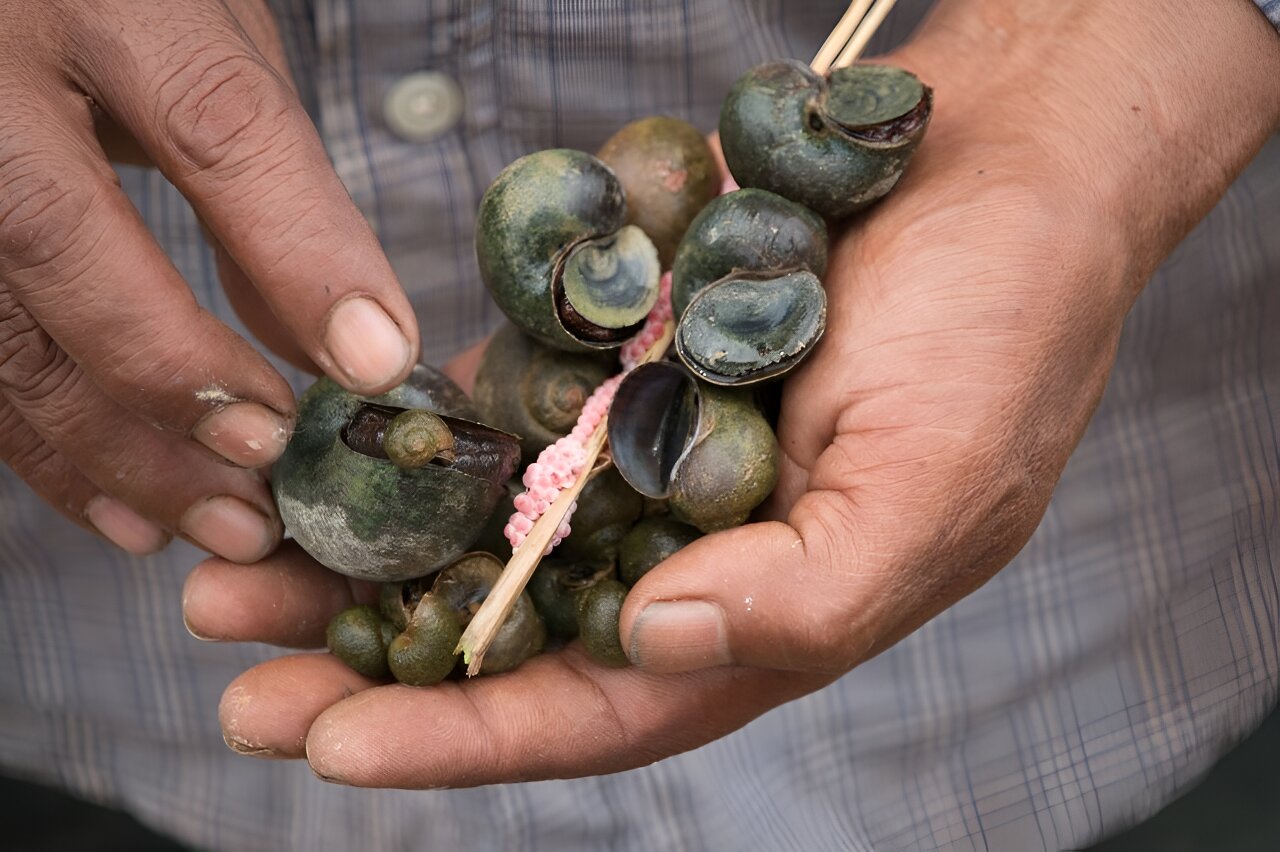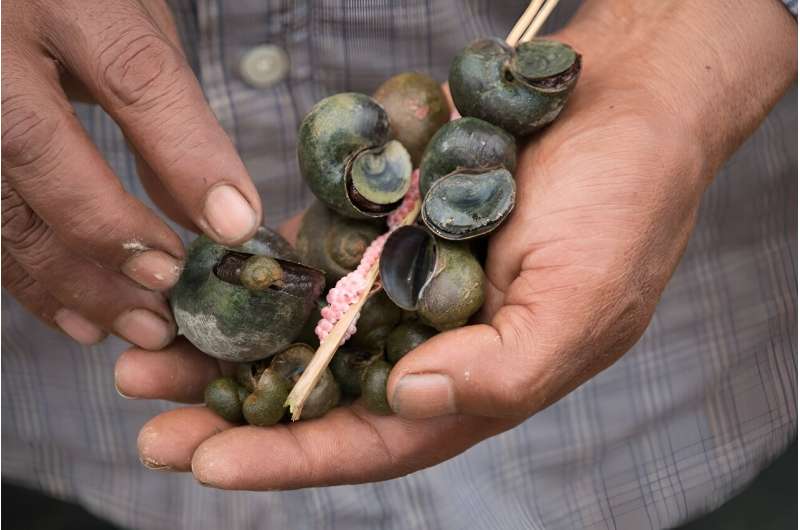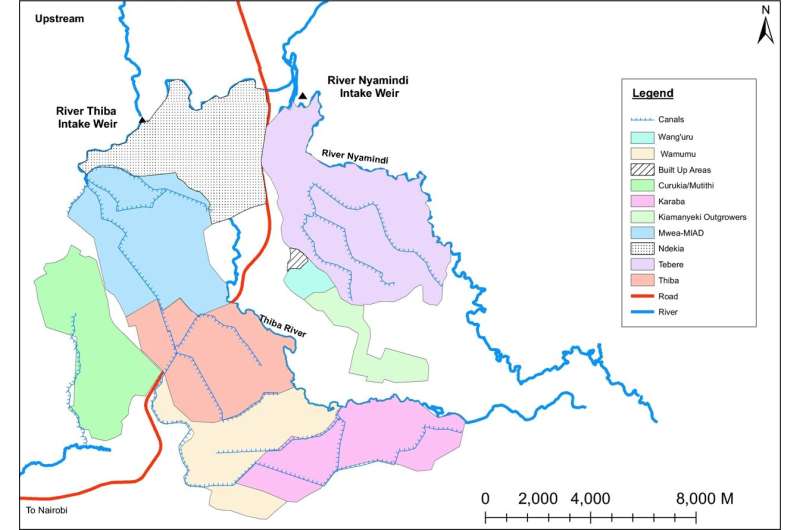

New research reveals that the invasive Apple Snail—which threatens rice crops—could spread further in Africa. The study is published in the journal CABI Agriculture and Bioscience.
A team of researchers from CABI’s regional center for Africa in Nairobi, working with KEPHIS, suggest that South West along Tana River, Western Kenya and areas coastal areas are suitable for Apple Snail invasion as well as other countries including Malawi, Madagascar, Uganda, Mozambique, Tanzania and Ethiopia.
However, the risk to Sudan, South Sudan and Somalia is deemed to be “very low.”
The invasive Apple Snail (Pomacea canaliculata) was first reported in Kenya in 2020 invading the Mwea irrigation scheme—one of the largest rice-producing areas in the country—where over 80% of the site is now infested.
Rice is the third most important crop in Kenya and plays a critical role in increasing household food security and increasing farmers’ incomes. It is mainly produced under irrigation with production expected to increase with the construction of Thiba dam in Mwea.
However, crops are at risk from the Apple Snail. Previous studies have highlighted that the pest can reduce yields by as much as 50% with economic impacts running into millions of US dollars.
Fernadis Makale, lead researcher of the study published in CABI A&B, said, “The invasive Apple Snail is among the world’s worst invasive species and its impacts have been documented in various parts of the world. Knowledge of the boundary of invasion is important in appropriate resource allocation in the surveillance and management of the pest.”
The researchers argue that strict quarantine measures should be instituted and implemented to curb not just the spread of the pest in Kenya but into uninvaded regions.
In terms of management options, the scientists say that farmers have mainly relied on cultural, physical and—on a desperate scale—a “trial-error approach” using chemical pesticides.
Mr. Makale added, “Unfortunately, most of these management practices have proven to be either cumbersome, impractical, expensive or ineffective. Key to the management of the Apple Snail is early warning and contingency planning.

“Furthermore, strict quarantine measures should be developed and planting material and machinery from Mwea must be thoroughly inspected and disinfected before being allowed into other schemes.”
He also said that, in order to manage and curb further spread, especially to other risk areas, a range of other containment measures should be implemented.
These include undertaking the training and awareness of and on Apple Snail through National Irrigation Authority (NIA) with support of other county teams, physical/mechanical control through handpicking snails and crushing their eggs, and cultural practices like alternate wetting and drying of paddies.
The researchers conclude by suggesting that the Kenyan Government—through its relevant agencies (particularly NIA, KEPHIS and the Plant Protection and Food Safety Directorate (PP&FSD) of the Ministry of Agriculture and Livestock Development)—should bring together stakeholders in the rice value chain to immediately create awareness and institute the control measures proposed in their paper.
More information:
Fernadis Makale et al, Current and potential distribution of the invasive apple snail, Pomacea canaliculata in Eastern Africa: evidence from delimiting surveys and modelling studies, CABI Agriculture and Bioscience (2024). DOI: 10.1186/s43170-024-00301-7
Citation:
Study reveals invasive Apple Snail could spread further in Africa (2024, October 2)
retrieved 2 October 2024
from https://phys.org/news/2024-10-reveals-invasive-apple-snail-africa.html
This document is subject to copyright. Apart from any fair dealing for the purpose of private study or research, no
part may be reproduced without the written permission. The content is provided for information purposes only.